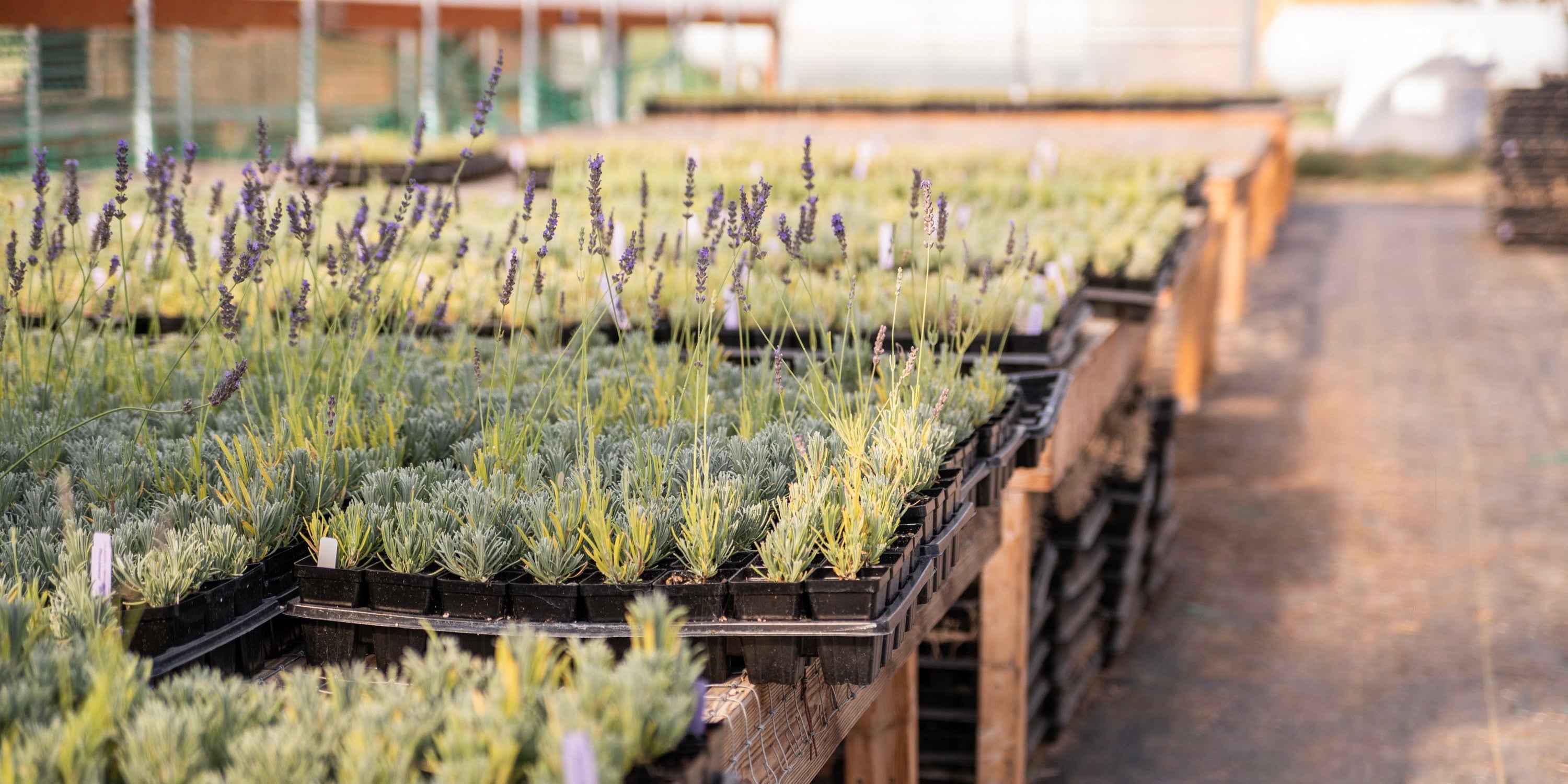How far apart do I plant my lavender?
Angustofolias (English) are planted approx. 36" apart. X.Intermedia are 36-48" apart.
What are the ideal growing conditions for lavender?
Lavender thrives in well-drained soil and requires full sun exposure. It prefers a pH level between 6.5 and 7.5, which is slightly acidic to neutral. A small amount of lime can help raise the pH level. Lavender also requires good air circulation to prevent diseases.
When is the best time to plant lavender?
The best time to plant lavender is in the spring, after the last frost has passed. This allows the plant to establish its roots before the hot summer months. However, if you live in a warmer climate, you can also plant lavender in the fall.
How often should lavender be watered?
Lavender is a drought-tolerant and deer resistant plant that does not require frequent watering. It is important to let the soil dry out between waterings to prevent root rot. Watering once every two to three weeks is usually sufficient, but adjust the frequency based on your climate and soil conditions.
New plants need to be watered more often due to the fact that the roots are close to the surface of ground. However, a word of caution, do not over water. Lavender plants do not like their roots wet. Over watering is detrimental to your plant. Water plants at their base, do not water overhead as this could split the plant at the base and also ruin the fragrance of the flowers.
How do you prune lavender?
After your lavender has bloomed, harvest the flowers then cut the rest of the plant 3 inches above the wood. Wood is the brown stem below the growth. By year 2, your plant will double in size and will be fully mature by year 3. Each year, after harvesting flowers, trim 3 inches above the wood. The plant should be shaped into a mound by year 2. Make sure all stems are cut before winter. Leaving stems on through the cold, wet winter weather will cause moisture to be trapped beneath the plant which may cause a fungus to inhibit the plant.
How do you harvest lavender?
Harvest lavender when the flowers are in full bloom but before they start to fade. Cut the stems just above the leaves, leaving a few inches of stem attached. Bundle the stems together and hang them upside down in a cool, dry place to dry. Once dried, you can remove the flowers from the stems and store them in airtight containers.
What are common pests and diseases that affect lavender?
Lavender is generally resistant to pests and diseases, but there are a few common issues to watch out for. Aphids, spider mites, and root rot can affect lavender plants. To prevent these problems, ensure good air circulation, avoid overwatering, and regularly inspect your plants for any signs of infestation or disease.
Can lavender be grown in containers?
We recommend planting directly into the ground however lavender can be successfully grown in containers. Choose a container with good drainage and use a well-draining potting mix. Place the container in a sunny location and water sparingly, allowing the soil to dry out between waterings. Prune the plant regularly to keep it compact and prevent it from becoming leggy.
What are some popular lavender cultivars?
There are many different lavender cultivars to choose from, each with its own unique characteristics. Some popular Lavandula angustifolia cultivars from our farm include Royal Velvet, True Hidcote, and Miss Katherine. A few popular X. Intermedia cultivars include Grosso, Provence, and Super. Research the specific requirements and growth habits of each variety before selecting the one that best suits your needs.
Can lavender be used for culinary purposes?
Yes, lavender can be used in cooking and baking. The flowers have a fragrant, floral flavor that pairs well with both sweet and savory dishes. However, it is important to use culinary lavender specifically labeled for consumption, as some varieties may contain higher levels of camphor, which can be bitter and unpleasant.
What are some uses for lavender besides its fragrance?
In addition to its delightful fragrance, lavender has a variety of other uses. It can be used in skincare products, such as soaps and lotions, for its soothing and calming properties. Lavender essential oil is also popular for aromatherapy and relaxation. Additionally, dried lavender flowers can be used in potpourri, sachets, and herbal teas.
By following these guidelines, you can successfully grow lavender and enjoy its beauty, fragrance, and various uses. Whether you plant it in your garden or in containers, lavender is a versatile and rewarding plant to cultivate.




